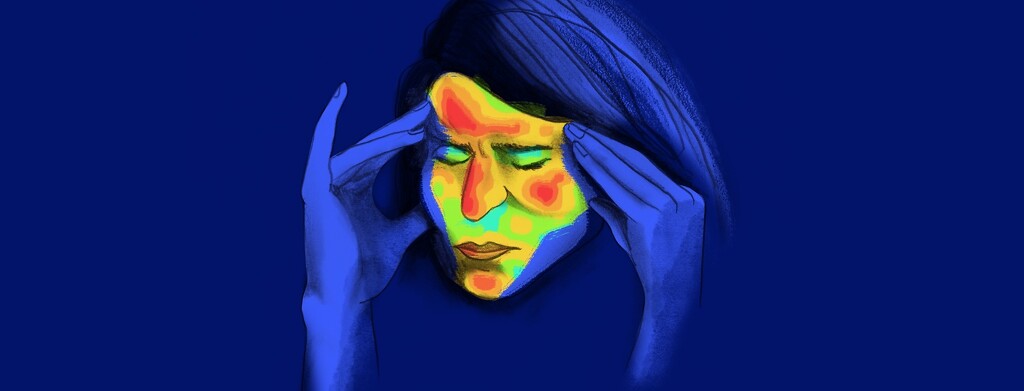Body Temperature and NMO Symptoms (Uhthoff’s Phenomenon)
Increases in body temperature can worsen symptoms of neuromyelitis optica spectrum disorder (NMOSD). This worsening of symptoms with heat is called Uhthoff’s phenomenon.1-3
What is Uhthoff's phenomenon?
Uhthoff’s phenomenon is commonly used to describe a similar experience in multiple sclerosis (MS). The term is named after Wilhelm Uhthoff, the doctor who first reported it more than 100 years ago, Wilhelm Uhthoff. Uhthoff noticed that some people had worsening symptoms after exercising. Since then, other experts have been able to make the specific link between symptoms and body temperature. It is also called Uhthoff’s sign or Uhthoff’s syndrome.1,2,4
Not everyone with NMOSD will experience changes in symptoms with heat. However, it is fairly common. One study found that more than half of those with NMOSD report Uhthoff’s phenomenon.5
Heat and NMOSD
Although the exact cause of Uhthoff’s phenomenon is not known, there are some theories. Experts believe that increases in body temperature may impact the way nerves talk to one another.1,2,4
NMOSD is an autoimmune condition in which the body mistakenly attacks its own healthy nerves. This makes it harder for nerves to communicate with one another and leads to symptoms. If nerves are already damaged and have a hard time talking to each other because of NMOSD, increases in temperature may make things even worse.6
Studies have shown that even small increases in body temperature can impact nerve conduction speed (how fast nerves talk to each other and other parts of the body). Exercising, sitting outside in the sun, having a fever, or taking a hot bath can all cause these small changes. Increases in body temperature may also lead to more inflammation. Proteins related inflammation can lead to additional symptoms like fatigue and pain.2
In some cases, Uhthoff’s phenomenon can occur even before a person is diagnosed with NMOSD or MS.2
What are the symptoms of Uhthoff’s phenomenon?
In NMOSD, heat can cause episodes of optic neuritis (inflammation of the nerve involved in vision). Heat can also impact how well the eyes are able to move. Together, these can cause vision problems and eye pain. Other common NMOSD symptoms can get worse with heat, too. Some of these include:1,2
- General pain
- Weakness or numbness
- Fatigue
- Balance issues
- Bowel issues
- Cognitive issues (trouble thinking, remembering things, or concentrating)
How long does it last?
Thankfully, this worsening of symptoms does not last long. As an example, it may start within 30 minutes of starting to exercise and be gone within an hour. Typically, heat-related symptoms do not last more than a day. For most, symptoms will be gone much faster. The person experiencing Uhthoff’s phenomenon also goes back to their baseline function after their temperature returns to normal. There is no long-term damage.2,4
Uhthoff’s phenomenon is temporary and not related to a worsening of underlying NMOSD. It is sometimes called a pseudo-exacerbation. It is not the same as a relapse or exacerbation.4
How to reduce the risk of heat-related symptoms
Although heat may worsen symptoms, it does not mean certain activities should be avoided. Exercising may actually help improve symptoms. It can also help prevent other co-occurring conditions from arising and causing more issues.7
However, people who experience Uhthoff’s phenomenon may need to take steps to reduce their risk when exercising or going outside. Some of these include: 1,4
- Drinking plenty of cold water
- Taking cool showers or baths when feeling warm
- Staying in the shade when outside
- Spending time outdoors in the morning or evening when temperatures are cooler, rather than during mid-day when it is hotter
- Seeing your doctor right away if you think you have a fever or infection
- Staying with a buddy when working out or spending time outdoors in the sun
- Limiting time in hot water, such as hot showers or hot tubs
Some research has suggested that using cooling methods before and during exercise may help. These include using cool compresses or cooling vests. Talk to your doctor about any limitations you may have with NMOSD when it comes to exercise or being outside.7
If you have symptoms of Uhthoff’s phenomenon but were not doing an activity that raised your body temperature before symptoms began, talk with your doctor. An underlying infection causing a fever can increase your body temperature, too. Your doctor can help figure out if your symptoms are related to something causing Uhthoff’s phenomenon or another separate issue.1,2,4
Have you noticed that your NMOSD symptoms worsen in the heat?

Join the conversation